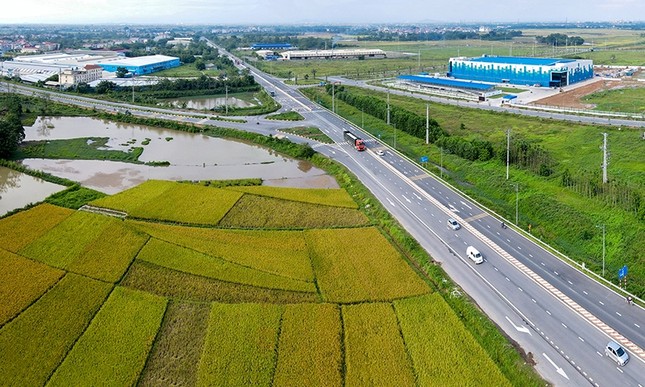A survey team inspecting and urging the implementation of the arrangement of district- and commune-level administrative units had a working session in Vinh Phuc province.
According to the leader of the Department of Home Affairs of Vinh Phuc, in the period of 2023–2025, there will be no district-level administrative units in Vinh Phuc that need to be rearranged.
The province has six districts and cities with communal-level administrative units that need to be rearranged, including Tam Duong, Yen Lac, Vinh Tuong, Song Lo, Binh Xuyen, and Phuc Yen City. There are 22 communal-level administrative units that need to be rearranged, including six with specific factors that will not be rearranged.
Thus, in the period of 2023–2025, the province will rearrange 28 communal-level administrative units, including 16 units that do not meet the standards and do not have specific factors that will be merged with 12 adjacent communal-level administrative units to form 13 new units, including nine communes, one ward, and three towns.
After the merger, the whole province will have 121 communal-level administrative units (including 88 communes, 15 wards, and 18 towns), a reduction of 15 communal-level administrative units. To date, all 28 administrative units subject to rearrangement have completed the process of collecting voters’ opinions.
The total number of voters who agreed with the rearrangement plan reached 91.63%. On April 26, the Provincial People’s Committee issued a Scheme for the rearrangement of communal-level administrative units and submitted it to the Government as prescribed.

Vinh Tuong District, Vinh Phuc Province. Photo: Van Nhat
According to the leader of the Department of Home Affairs, the province is facing difficulties in arranging cadres, commune-level officials and non-specialized staff, especially in arranging the team of commune-level officials due to the challenge of downsizing.
The heads of political, social organizations after the rearrangement will only be allocated one person each, while some heads of political and social organizations do not meet the conditions to be appraised and transferred to civil servants as prescribed.
The working team requested the province to clarify some issues, such as the specific factors of the administrative units proposed to delay the rearrangement, the issues of compatibility and ensuring planning and urban development between communes and towns, and the arrangement of redundant officials after the rearrangement…
Vice Chairman of the Provincial People’s Committee of Vinh Phuc, Vu Chi Giang, said that to successfully build the Scheme for the rearrangement of communal-level administrative units for the period of 2023–2025, Vinh Phuc province proactively sought advice from relevant ministries and sectors, especially the Ministry of Home Affairs, the Ministry of Construction, and the Ministry of Finance, to make appropriate adjustments.
Along with many advantages and consensus from the people, favorable geographical location, and other supporting conditions, the province has achieved positive results as it is today. With the goal of striving to become a centrally-run city by 2050, Vinh Phuc province continues to implement the Scheme in the most methodical and scientific way, creating a solid foundation and contributing to the successful achievement of the set goals.
Deputy Minister of Justice Dang Hoang Oanh said that Vinh Phuc is one of the provinces and cities that issued the Scheme earliest in the country, creating favorable conditions for ministries and sectors to study, consider, and contribute opinions. Ms. Oanh suggested that the province continue to do well in propaganda work, creating a higher consensus among the people. Timely solve difficulties and problems arising in the process, especially the regime and policies for redundant officials after the rearrangement.
In addition, the province needs to review and make a list of specific works of the headquarters, thereby making plans for investment, repair, and upgrade suitable to the reality of each locality after the merger…





![[Photo Essay]: Experts, Managers, and Businesses Unite to Forge a Path Towards Sustainable Green Industry](https://xe.today/wp-content/uploads/2025/07/z678592918-150x150.jpg)


![[Photo Essay]: Experts, Managers, and Businesses Unite to Forge a Path Towards Sustainable Green Industry](https://xe.today/wp-content/uploads/2025/07/z678592918-100x70.jpg)



